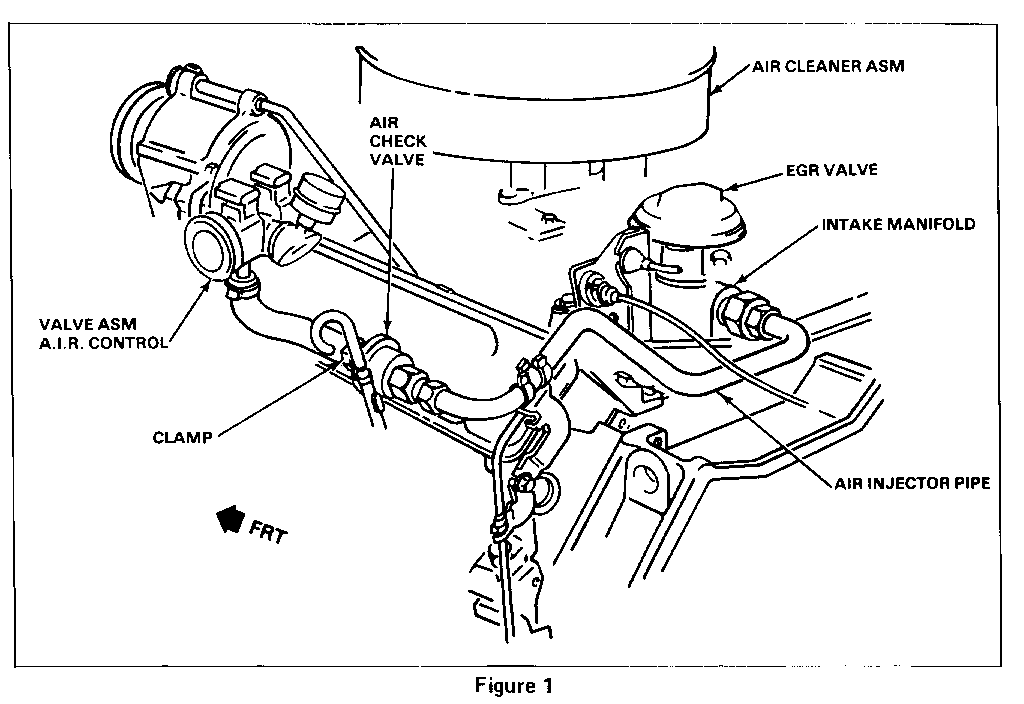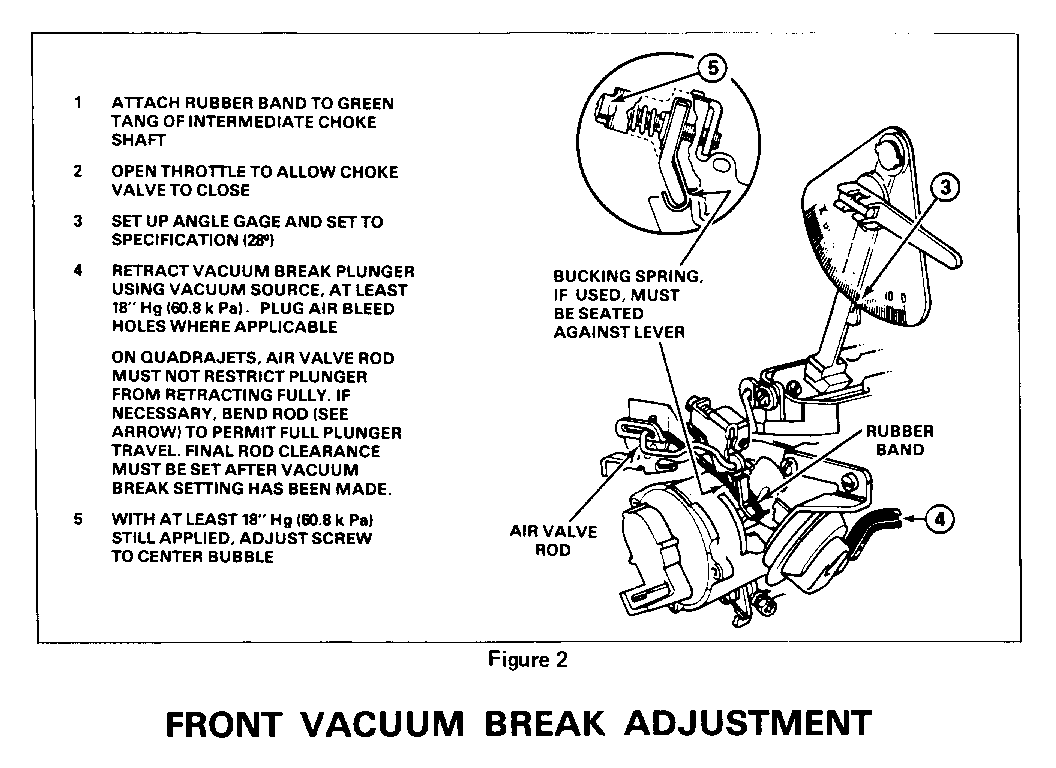CAMPAIGN: AIR INJECTOR PIPE CORROSION/REPAIR REVISION

Models Years: 1983 CUTLASS SUPREME, CUTLASS SUPREME BROUGHAM, CUTLASS CALAIS, CUTLASS CRUISER AND DELTA 88 MODELS EQUIPPED WITH 3.8L ENGINE (VIN CODE A) AND CALIFORNIA EMISSIONS (NB2)
CONDITION
General Motors has determined that some 1983 Oldsmobile Cutlass Supreme, Cutlass Supreme Brougham, Cutlass Calais, Cutlass Cruiser, and Delta 88 models equipped with RPO LD5 3.8L engine and California emissions may be emitting pollutants in excess of California emission standards. This may be attributed to the air injection pipe corroding with increased mileage and exposure.
VEHICLES INVOLVED
All 1983 Oldsmobile Cutlass Supreme, Cutlass Supreme Brougham, Cutlass Calais, Cutlass Cruiser, and Delta 88 models equipped with RPO LD5 3.8L engine (VIN Code A) and California emissions (NB2).
DEALER ACTION
To correct this condition, the AIR injection tube and AIR injection check valve will be inspected and replaced, if required. In addition, the carburetor primary vacuum break is to be inspected for proper operation. When required, the primary vacuum break, if found to be inoperative, will be replaced.
Dealers are to perform this campaign on all involved vehicles at no charge to owners, regardless of mileage, age of vehicle, or ownership from this time forward.
Whenever a vehicle subject to this campaign is taken into your vehicle inventory, or it is in your dealership for service, you are to ensure the campaign correction has been made before selling or releasing the vehicle.
Dealers are to contact owners of vehicles recently sold from your used vehicle inventory and arrange for the campaign correction to be performed.
SERVICE PROCEDURE
1. Open hood and install fender covers. Remove air cleaner assembly.
2. Inspect and replace if necessary, AIR injector pipe and AIR injector check valve (See Figure 1):
a. Inspect AIR injector pipe for color. If pipe is black, new pipe has been installed, proceed to Step 3.
b. If pipe is corroded or silver color, replace AIR injector pipe and check valve. Use a back up wrench to loosen pipe fitting from intake manifold fitting. Remove clamp from hose end at check valve. Remove AIR injector pipe and AIR check valve.
c. Install new AIR injector pipe, AIR check valve, and clamp.
3. Inspect and replace, if necessary, primary (front) vacuum break:
a. Check primary (front) vacuum break for leakage by applying vacuum with hand vacuum device (J 23738) or equivalent. The unit should hold the vacuum level. If vacuum level is held, proceed to step 4.
b. If vacuum level is not held, replace primary (front) vacuum break unit.
c. Check vacuum break for proper setting (28 degrees). If adjustment is required, reset using primary break adjusting procedure shown in Figure 2.
4. Reinstall air cleaner assembly and check engine operation. Check AIR injector pipe and check valve fittings for leakage.
5. Remove fender covers.
6. Install a Campaign Identification Label.
7. Close hood.
CAMPAIGN IDENTIFICATION LABEL
Each label provides space to print the campaign number, and the five (5) digit dealer code of the dealer performing the campaign. Insert this information with a typewriter or ballpoint pen. When installing label, clean and dry the surface of the radiator support tie bar and apply the campaign label where it is readily visible.
PARTS INFORMATION
To ensure parts are obtained as soon as possible, order them from GM Service Parts Operations (GMSPO) on a C.I.O. order, with NO special instruction code, but on an advise code (2). Use the following part numbers:
Description Part Number Quantity Per Vehicle ------------- ----------- -------------------- AIR Pipe Assembly 25518944 1, as required AIR Check Valve 22048579 1, as required Vacuum Break, Primary 17067466 1, as required Clamp (3 /4" to 1 3/4") 10031017 1, as required
WARRANTY CLAIM INFORMATION
List the ONE applicable labor operation:
PC PART-NO. TOT-PTS TC LAB-0P LHRS ST SUBLET -- -------- -------- -- ------ ----- -- ------ Inspect Only 96 V4370 .2*
Inspect and replace AIR injector pipe and check valve 96 V4371 .5*
Inspect and replace primary vacuum break 96 V4372 .3*
Inspect and replace AIR injector pipe,AIR check valve and primary vacuum break 96 V4373 .6*
*.1 hour for clerical administration may be added to the above operation.
Parts allowance: Current dealer price, plus 30%.


General Motors bulletins are intended for use by professional technicians, not a "do-it-yourselfer". They are written to inform those technicians of conditions that may occur on some vehicles, or to provide information that could assist in the proper service of a vehicle. Properly trained technicians have the equipment, tools, safety instructions and know-how to do a job properly and safely. If a condition is described, do not assume that the bulletin applies to your vehicle, or that your vehicle will have that condition. See a General Motors dealer servicing your brand of General Motors vehicle for information on whether your vehicle may benefit from the information.
